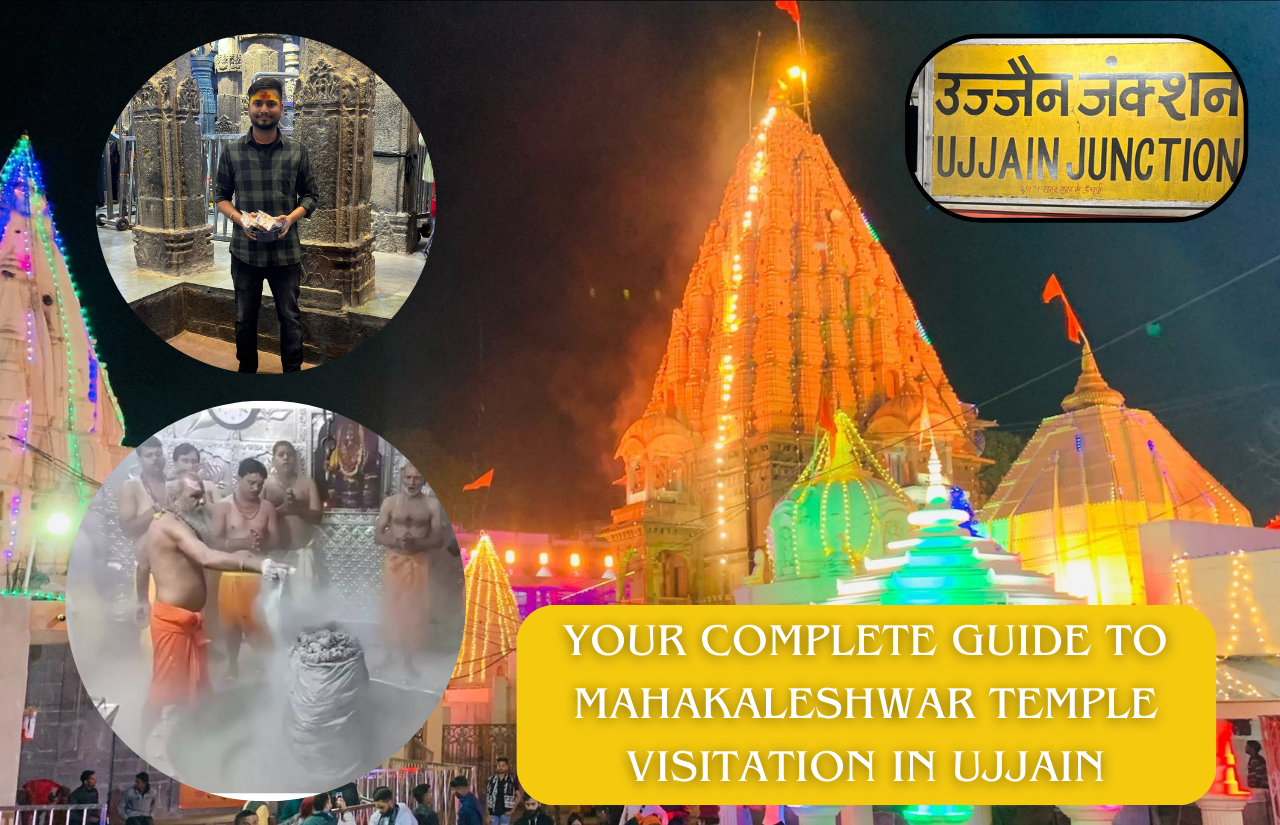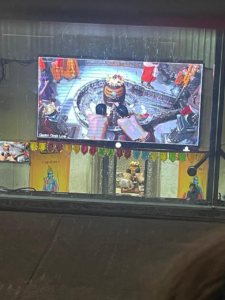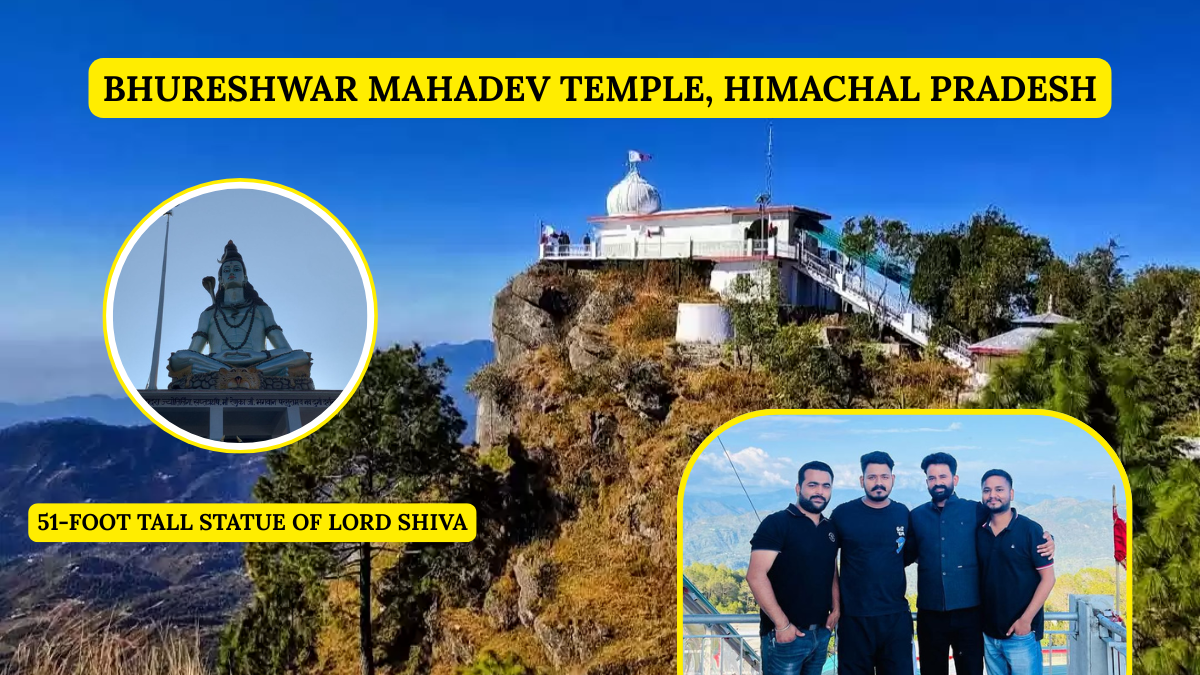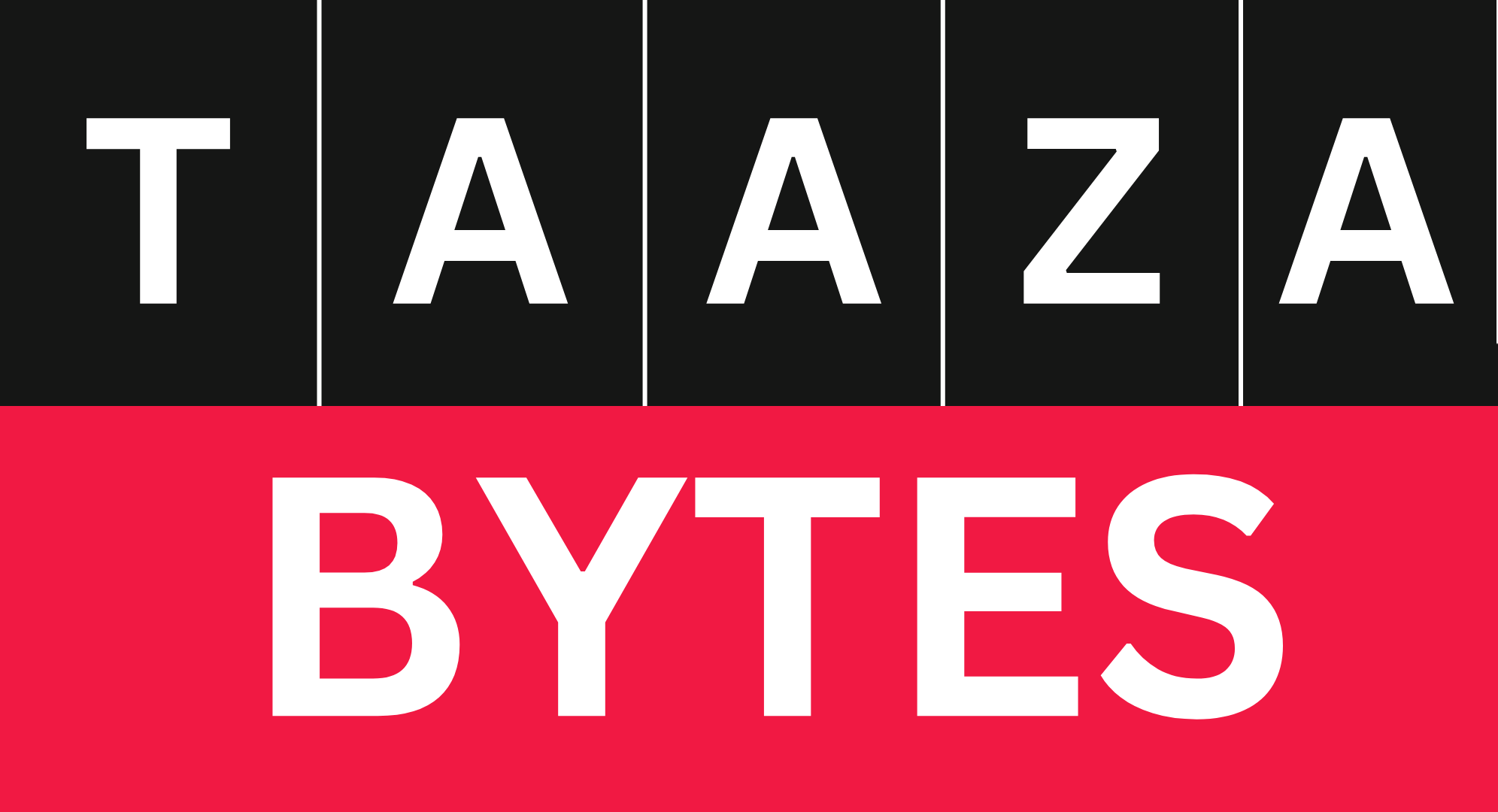You should really like visiting Ujjain, the City of Lord Shiva, for a number of reasons. It is said that this is the eternal home of the Hindu deity Mahakal. The self-manifested lingam is revered in the Mahakaleshwar temple in Ujjain. It is one of the twelve Jyotirlinga shrines in India, and this is where you could have the experience of a lifetime witnessing Lord Shiva’s aarti, known as Bhasm Aaarti.
There are several reasons why pilgrims and visitors come to Ujjain, such as the city’s abundance of spiritual energy, variety of activities, and affordable lodging. While the Mahakaleshwar Temple in Ujjain is a popular tourist site for all types of visitors, it receives a great influx of pious Shaivites during Mahashivratri and the fortunate month of Shravana, when it takes on a festive appearance. One location that you should undoubtedly visit at least once in your lifetime is Ujjain.
Not many people know that Mahakaleshwar is one of the eighteen Maha Shakti Peethas, the site where Sati is supposed to have fallen and where the shakti known as Mahakali is reported to have fallen. Shiva is therefore worshipped here as Mahakaleshwar, hence the shrine’s name.
Before you plan a trip to the Mahakaleshwar Temple, I will cover all you need to know about it in this piece. Read the blog Guide to Mahakaleshwar Temple.
Story of Jyotirlingas
Hinduism holds that Lord Shiva is the Almighty God and the One Who Created the Universe. According to legend, Lord Brahma and Vishnu battled each other long ago to determine who was superior. In front of them, Shiva materialized as a gigantic pillar of light. To locate the ends of this luminous pillar, Brahma descended and Vishnu rose. When Vishnu could not locate the finish, he conceded defeat, while Brahma continued to tell lies. As Shiva came down from the pillar, he blessed Vishnu for his piety and cursed Brahma. The “Jyotirlinga” is the name of this luminous pillar.
So, the Jyotirlinga shrines are the places where Shiva took the form of a flaming column of light. It is important to distinguish Shiva’s 64 forms from Jyotirlingas. Thought to represent distinct incarnations of Shiva, each of the twelve jyotirlinga locations is named after the ruling deity. At each of these locations, the main picture is a lingam, which symbolizes the limitless and boundless Stambha pillar and represents Shiva’s unlimited nature. The name of the Ujjain temple comes from the fact that the Jyotirlinga is revered as Mahakaleshwar.
History of Mahakaleshwar Temple
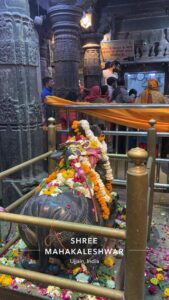
When Sultan Shams-ud-din Iltustmish raided Ujjain in 1234–1235, he destroyed the temple complex. A nearby pond known as “Kotiteerth Kunda” is believed to have been the location of the disassembled Jyotirlinga, while the Jaladhari, a structure that supported the Lingam, was taken during the invasion.
After being chosen by Baji Rao to oversee the collection of taxes in the Malwa district, Maratha general Ranoji Shinde erected the current building in 1734 AD. Other Shinde dynasty members, such as Mahadji Shinde (1730–1794) and Daulat Rao Shinde’s wife Baiza Bai (1827–1863), contributed to more advancements and management. Under Jayajirao Shinde’s rule till 1886, this shrine hosted important events for the Gwalior State.
Go through with our article Guide to Mahakaleshwar Temple
In Ujjain, the Maratha Empire government was founded in the fourth decade of the eighteenth century. Peshwa Bajirao-I gave his devoted commander Ranoji Shinde full authority over Ujjain. Sukhatanakar Ramchandra Baba Shenavi, the Diwan of Ranoji, was a wealthy man who chose to use his fortune for religious endeavors. In this regard, throughout the fourth and fifth centuries of the eighteenth century, he erected the Mahakaleshwar Temple in Ujjain.
Following the independence of India in 1947, the Mahakaleshwar Devasthan Trust was assumed by the municipal administration of Ujjain. The Ujjain district collectorate office is currently in charge of overseeing it.
Mahakal Lok Corridor
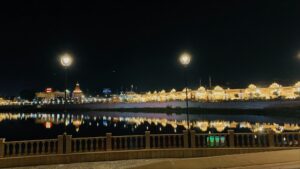
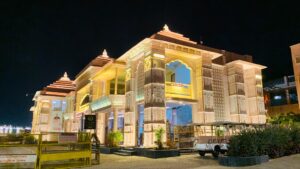
The Mahakal Lok Corridor spans a distance of almost 900 meters. The Nandi Dwar and the Pinaki Dwar are two magnificent gateways that lead to entry. The 108 elaborate sandstone columns are arranged in a row, with different’mudras’ of Lord Shiva engraved on the pillars and the ‘Trishul’ design on top. The ancient Rudrasagar lake, which is also a component of the construction project, encircles the corridor.
As you walk down the corridor, you’ll witness 108 stambhs that depict Shiva stories from the scriptures, 53 murals, and 192 statues.
There are rumors that Rajasthan is the source of the sandstone used for the corridor. Artists from Rajasthan, Gujarat, and Odisha have contributed to the artistic exhibitions.
Facilities within the corridor complex include a parking lot, a park and playing area for children, the Triveni Museum, an open-air theatre which overlooks the Rudrasagar lake, restaurants and shops, etc.
How to Reach Shree Mahakaleshwar Temple ?

By Air
In Ujjain, there are no airports. The closest airport to Ujjain is the Indore airport, which is 56 kilometers away and can be reached by car in about an hour. You may easily travel to Ujjain via taxi or other public transportation. AirAsia, Vistara, and Air India are among the airlines that offer direct flights from Delhi to Indore. Direct flights like AirAsia and IndiGo are available from other locations as well, including as Bangalore and Mumbai.
By Train
Given its prominence in Madhya Pradesh, Ujjain enjoys excellent transportation connections to all of India’s main regions. The Ujjain Junction railway station is the closest to Ujjain. The Ujjain Junction railway station is served by frequent trains that arrive here every day from several major Indian towns. From the train station, private or public transportation makes it simple to reach any area of the city. The most affordable way to travel is by this means. Trains such as the Intercity Express, CDG INDB Express, Malwa Express, and others go from Delhi to Ujjain, while trains from Mumbai to Ujjain include the Avantika Express, Pune Gwalior Express, and BDTS INDB Superfast Special Express.

By Road
Since Ujjain is well connected to all surrounding towns in the state, if you are visiting from a neighboring place, taking the road is the best option. In addition to personal vehicles and hired taxis, you can easily go to Ujjain by using one of several luxurious and quick private buses. The approximate road distance from Bangalore is around 1403 km, and the distance between Ujjain and Mumbai is 639 km.
You must make an offline or online reservation in order to participate in this holy aarti. On the other hand, I will greatly simplify your work with this post.
Locals in Ujjain now have two options: they can make reservations offline at the counter located directly outside the temple complex, or they can make reservations online through the website of the temple management. The best choice for outsiders is to book online.
You must go to the Mahakaleshwar Temple website at https://shrimahakaleshwar.com/ to make an online reservation for Bhasm-Aarti. Select the Bhasm Aarti tab from this location, and then choose Bhasm Aarti online booking from the drop-down menu. You will see a page showing the number of open slots along with the dates that are available. Click the date after first confirming whether a slot is available on that specific day. Five times as many slots can be reserved at once. You simply need to fill up the form that appears, submit a photo, and provide identification as confirmation of identity. Guide to Mahakaleshwar Temple
Everybody who reserved a spot for the Bhasm Aarti needs to bring identification and a photo of themselves. Women must wear saaris at the Mahakaleshwar Bhasma Aarti.
Steps to Book Bhasm Aarti
Step1: Click HERE or go to https://shrimahakaleshwar.com/bhasmarti
Step2: Click on bhasma aarti booking button.
Step3: Select the day you wish to visit the temple by clicking on it.
Step4: Enter the applicant’s personal information, scanned photo, and proof of identity. Choose the photo ID proof that you want to submit, then type in the photo ID number.
Step5: Enter the other devotees’ details with uploading their scanned photo & proof of Identity.
Step6: Select permission name (Nandi Hall/Barricades) and the click on check availability.
Step7: Please enter the captcha (the code from the image) and click submit if it is available.
Step8: The message “Booking Successfully!! Download of Printer Receipt” will appear on the screen if the quota is available. To download the receipt, click the message. SMS would be used to notify devotees.
List of confirmed Applicants will be displayed in Temple Website at 7PM, one day before the day of Bhasmarti.
After 5:00 am, Bhasmarti will not be allowed entry.
Confirmed Devotees must bring their online booking receipt and original identification proof.
There is a Bhasma Aarti Counter close to the temple’s front gate. At this station, devotees will drop off their applications and receive an electronic receipt.
Aarti and Darshan timings for Mahakaleshwar Temple
The Mahakaleshwar Temple in Ujjain, Madhya Pradesh, is one of the most respected Hindu temples dedicated to Lord Shiva. In addition to its religious significance, it is well recognized for its exacting and unique ceremonies. To make the most of your visit to this revered site, it is imperative that you comprehend the temple’s schedule. In this comprehensive tour, we will look at the Mahakaleshwar Temple’s diverse hours, customs, and important information for devotees and guests.
Entry Fee: Free
VIP Darshan: ₹250
Important Rituals (Puja) and Timings
1. Bhasm Aarti
2. Rudrabhishek Puja
3. Shringar Darshan
4. Panchamrit Abhishek
5. Evening Aarti (Sandhya Aarti)
6. Night Puja
7. Bhagwan Bhasm Aarti
The Mahakaleshwar Temple follows a specific schedule that varies throughout the day.
Here are the general temple timings:
Morning (Pratahkal)
The temple opens early in the morning.
Morning Darshan: 4:00 AM to 7:00 AM
One of the most important ceremonies at the temple, the Bhasm Aarti, takes place at this time. Sacred ash is applied to the Shiva Lingam during this holy event, which is witnessed by devotees assembling.
Daytime (Madhyahn)
Darshan and other rites can still be performed at the temple after the Bhasm Aarti.
Darshan: 10:30 AM to 1:00 PM
During this time, devotees can have a more relaxed and peaceful darshan of Lord Shiva.
Evening (Sandhya)
The evening darshan timings are as follows:
Darshan: 6:00 PM to 7:00 PM (Varies with sunset time)
Devotees have another chance to visit the temple and ask for Lord Shiva’s blessings during the sunset darshan.
Night (Ratrikal)
The temple remains open at night as well.
Darshan: 8:00 PM to 10:00 PM
The evening Aarti is held at this hour, and it is typically less crowded than the Bhasm Aarti in the morning.
Please be aware that the times may change significantly based on holidays and the time of year. For the most recent timings, it is advised to verify with the Mahakaleshwar Temple’s administration or on its official website.
Rituals (Puja) and Timings
1. Bhasm Aarti
Timings: 4:00 AM to 6:00 AM
The most well-known and important ceremony at the Mahakaleshwar Temple is the Bhasm Aarti. In this ceremony, the Shiva Lingam is covered with holy ash (bhasm) as the temple priests recite Vedic mantras. Witnessing this holy ceremony, which attracts devotees from all over the world, is an amazing spiritual experience. It’s best to arrive well in advance to guarantee a decent view.
2. Rudrabhishek Puja
Timings: 6:00 AM to 7:00 AM
A potent and intricate puja performed in honor of Lord Shiva is the Rudrabhishek. It entails singing Vedic mantras as the Shiva Lingam is ritualistically bathed in a variety of sacred liquids, such as milk, yogurt, honey, ghee, and water. It is said that by performing this puja, one can obtain Lord Shiva’s blessings for prosperity, health, and spiritual development.
3. Shringar Darshan
Timings: 7:00 AM to 10:30 AM
A unique puja known as the Shringar Darshan entails dressing the god in a variety of garments, accessories, and flowers. It gives devotees an opportunity to see Lord Shiva in his adorned avatar and often occurs at midday.
4. Panchamrit Abhishek
Timings: 10:30 AM to 12:00 PM
The Panchamrit Abhishek involves immersing the Shiva Lingam in a concoction of five holy liquids, namely milk, yogurt, honey, ghee, and sugar. The purpose of this ritual is to ask Lord Shiva for blessings and cleanliness.
5. Evening Aarti (Sandhya Aarti)
Timings: 6:00 PM to 7:00 PM (Varies with sunset time)
The evening Aarti is a significant ritual that takes place in the evening hours. Devotees gather to witness this ceremony, which involves the waving of large oil lamps and the singing of devotional songs in praise of Lord Shiva.
6. Night Puja
Timings: 8:00 PM to 10:00 PM
This is a night puja that offers devotees an opportunity to seek Lord Shiva’s blessings in the peaceful ambiance of the temple at night. It includes the evening, Aarti.
7. Bhagwan Bhasm Aarti
Timings: 6:00 AM (Varies slightly)
The Bhagwan Bhasm Aarti is a little later version of the Bhasm Aarti that is performed early in the morning. For devotees who might not be able to make the early morning ritual, this is a less crowded option.
Best Time to visit Ujjain
A major portion of Madhya Pradesh is Ujjain. The city has drawn tourists with its earthly beauties in addition to its status as a pilgrimage site. The best season to visit Ujjain is from October to March, which is winter or spring. Summers are best avoided even though the imprisonment doesn’t get any closer to disappearing at any point during the year.
Seasons
Ujjain in summer – From April till June
Ujjain experiences hot, dry summers with temperatures between 31 and 45 degrees Celsius. It is not advised to schedule a trip to Ujjain at this time. If at all possible, steer clear of May and June; if not, explore alternative summertime locales and indulge your spirit.
Ujjain in Monsoon – From July till September
Similar to winter, monsoon is a fantastic time to visit Ujjain. In this season, Ujjain has a considerable amount of rainfall. You may easily enjoy your visit and the atmosphere remains nice. Remember to visit the most popular sites in Ujjain, such as the Mahakaleshwar Temple, the Bade Ganeshji Temple, the Kal Bhairava Temple, and others.
Ujjain in winter – From October to March
The ideal season to visit Ujjain is winter, when the city experiences mild, agreeable weather. The temperature fluctuates between 3 degrees Celsius (January nights) and 20 degrees Celsius from November to February. You can visit all of the city’s major sites, including the temples of Mahakaleshwar, Bade Ganeshji, Kal Bhairava, Sandipani, Harsiddhi, Bhartihari, Mangalnath, and Gadkalika. Guide to Mahakaleshwar Temple
Frequently Asked Questions Regarding Ujjain’s Mahakaleshwar Temple
Who constructed Ujjain’s Mahakaleshwar Temple?
Hindu mythology says that Lord Brahma constructed the Mahakaleshwar temple in Ujjain. But based on the temple’s structure, it appears to have been constructed in the Chalukya, Maratha, and Bhumija architectural styles in the middle of the eighteenth century.
How do you get to Mahakaleshwar, Ujjain?
The closest train station is Ujjain Junction, 1.5 km from the Mahakaleshwar Temple, and the closest airport is located in Indore, 51 km distant.Additionally, Ujjain has excellent road access to major areas of Madhya Pradesh and its neighboring regions.
What is the best time to visit Ujjain?
The best time to visit Mahakaleshwar temple in Ujjain is from October through March.
How long does Mahakaleshwar Darshan take?
The darshan in Mahakaleshwar temple in Ujjain doesn’t take much time. It is usually over in 30 minutes to 1 hour. So, never go for the VIP or the Shighra Darshan unless you are visiting in the month of Sravana or a festival day like Maha Shivaratri.
Conclusion
In conclusion, Ujjain, with its revered Mahakaleshwar Jyotirlinga, embodies India’s spiritual essence. This blog has explored the city’s deep-rooted connection to Lord Shiva. Stay connected with Taazabytes for more info Guide to Mahakaleshwar Temple.
